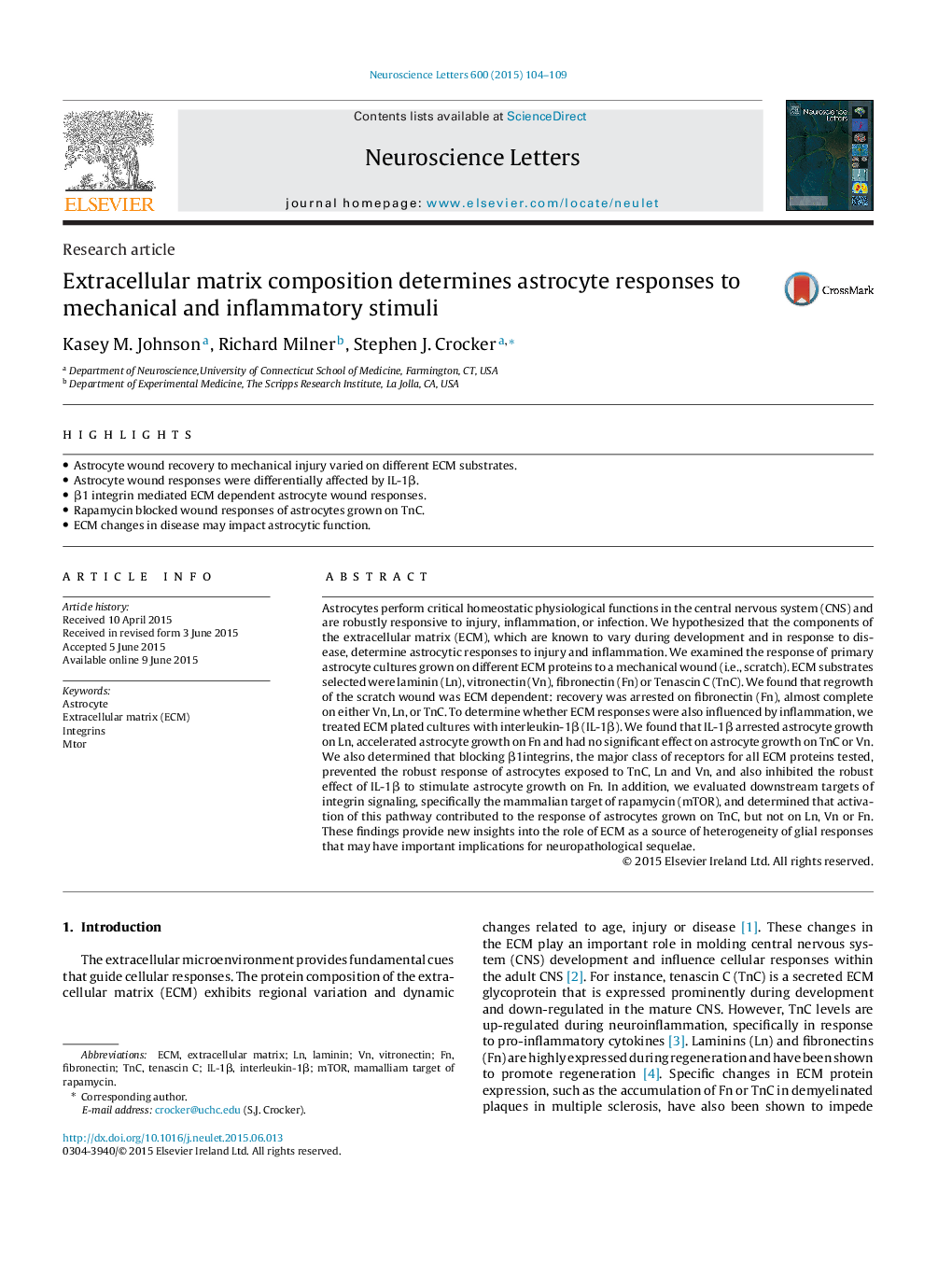| کد مقاله | کد نشریه | سال انتشار | مقاله انگلیسی | نسخه تمام متن |
|---|---|---|---|---|
| 4343393 | 1615099 | 2015 | 6 صفحه PDF | دانلود رایگان |
• Astrocyte wound recovery to mechanical injury varied on different ECM substrates.
• Astrocyte wound responses were differentially affected by IL-1β.
• β1 integrin mediated ECM dependent astrocyte wound responses.
• Rapamycin blocked wound responses of astrocytes grown on TnC.
• ECM changes in disease may impact astrocytic function.
Astrocytes perform critical homeostatic physiological functions in the central nervous system (CNS) and are robustly responsive to injury, inflammation, or infection. We hypothesized that the components of the extracellular matrix (ECM), which are known to vary during development and in response to disease, determine astrocytic responses to injury and inflammation. We examined the response of primary astrocyte cultures grown on different ECM proteins to a mechanical wound (i.e., scratch). ECM substrates selected were laminin (Ln), vitronectin (Vn), fibronectin (Fn) or Tenascin C (TnC). We found that regrowth of the scratch wound was ECM dependent: recovery was arrested on fibronectin (Fn), almost complete on either Vn, Ln, or TnC. To determine whether ECM responses were also influenced by inflammation, we treated ECM plated cultures with interleukin-1β (IL-1β). We found that IL-1β arrested astrocyte growth on Ln, accelerated astrocyte growth on Fn and had no significant effect on astrocyte growth on TnC or Vn. We also determined that blocking β1integrins, the major class of receptors for all ECM proteins tested, prevented the robust response of astrocytes exposed to TnC, Ln and Vn, and also inhibited the robust effect of IL-1β to stimulate astrocyte growth on Fn. In addition, we evaluated downstream targets of integrin signaling, specifically the mammalian target of rapamycin (mTOR), and determined that activation of this pathway contributed to the response of astrocytes grown on TnC, but not on Ln, Vn or Fn. These findings provide new insights into the role of ECM as a source of heterogeneity of glial responses that may have important implications for neuropathological sequelae.
Journal: Neuroscience Letters - Volume 600, 23 July 2015, Pages 104–109
